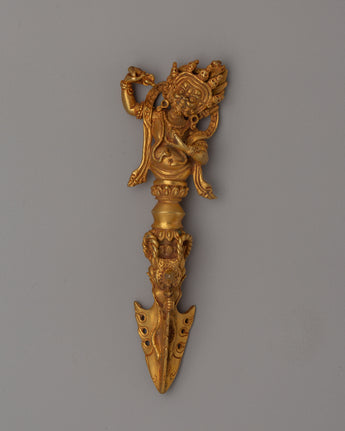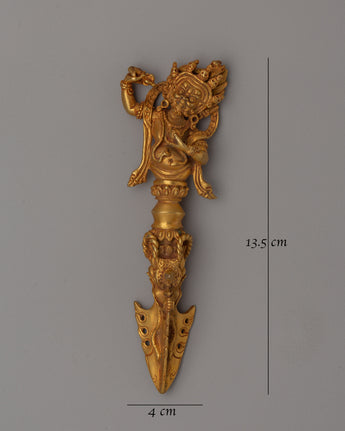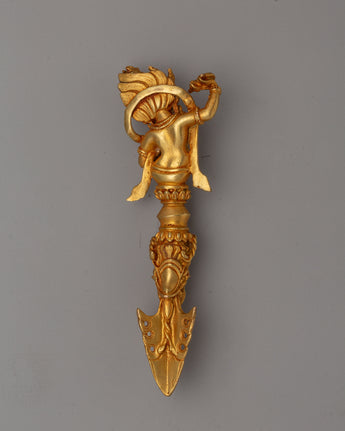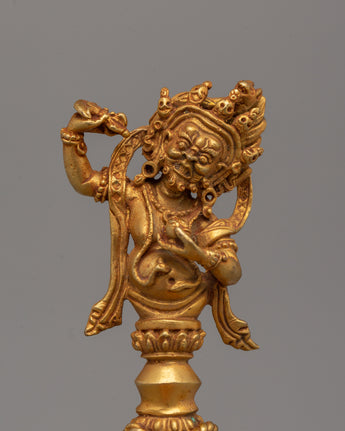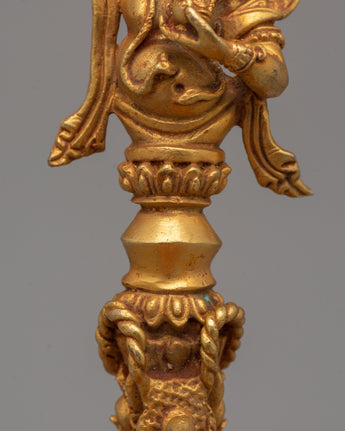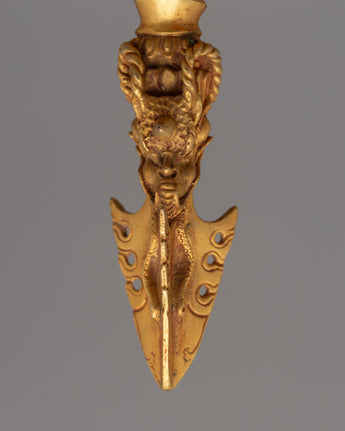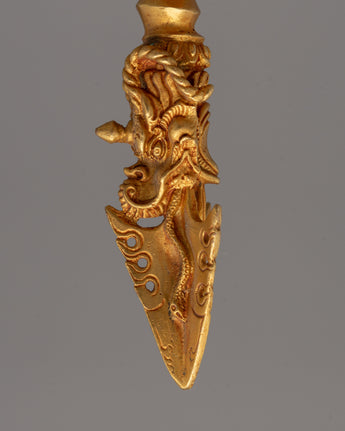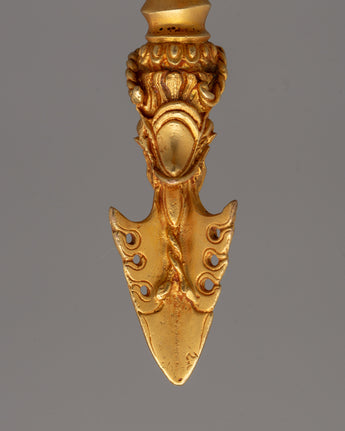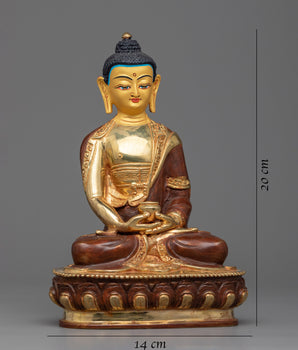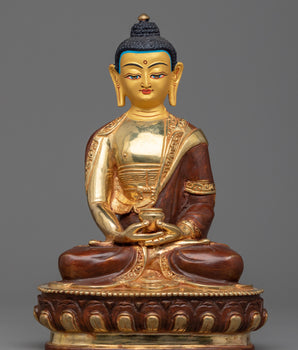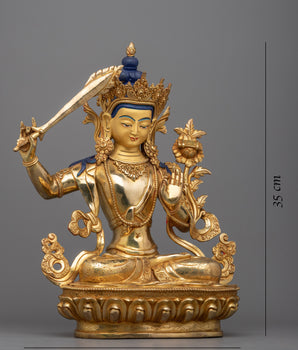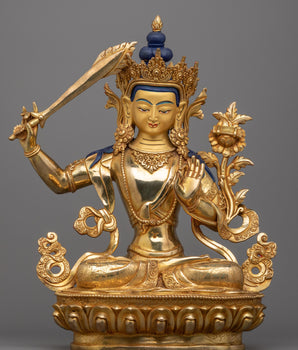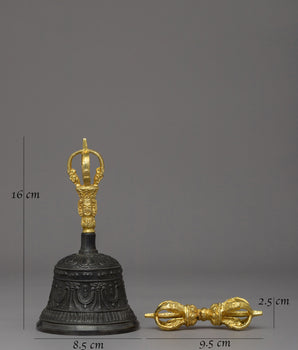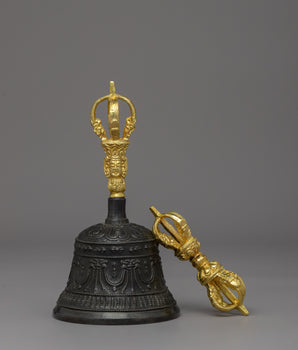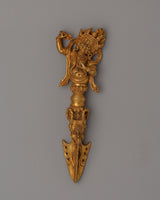
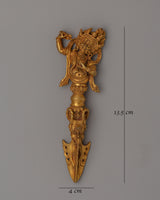
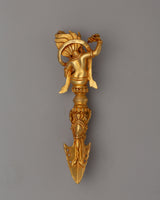
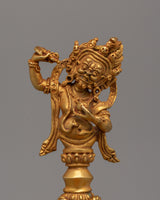
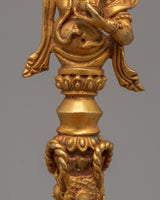
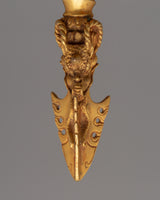
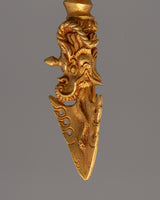
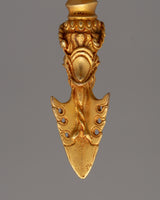
Gold-Plated Ritual Phurba for Tibetan Practices | Meditation Tool, Sacred Altar Artifact

100% AUTHENTIC

HANDMADE

FREE SHIPPING
Gold-Plated Ritual Phurba - Meditation Tool, Sacred Altar Artifact
--------------------------------------------
Size: 13.5cm (Height) x 4cm (Width)
Weight: 0.13 kg
Materials: Copper Body, Electro Gold Plated
--------------------------------------------
About The Ritual Item :
This handcrafted, gold-plated Phurba dagger helps you experience Tibetan rituals' spiritual power. This lightweight spiritual tool, which measures 13.5 cm in height by 4 cm in breadth and weighs only 0.13 kg, is composed of a copper body that has been elegantly electro-plated. In Buddhist rituals, the Phurba, also known as the Vajrakila, is a symbolic dagger used to eliminate negative energy and change it into positive spiritual force.
This Phurba is intricately crafted with ancient designs that symbolize the harmony of mind, body, and spirit with its three-sided blade and intricate handle. Its stunning appearance and spiritual value are enhanced by the gold-plated finish, which makes it a necessary addition to any altar or entrance of worship. This Phurba showcases the elegance and spiritual value of Himalayan traditions, whether it is used for meditation, ritual purposes, or collecting. For those who practice spirituality and appreciate sacred art, it also makes a thoughtful present.
Introduction To The Phurba :
The ceremonial dagger (Sanskrit: Kila; Tibetan: phurba) is essential for expelling evil and is considered especially effective in neutralizing the forces that obstruct Tantric Buddhist practice. It has ancient origins, first appearing in the Indian Rg Veda as the core blade of the vajra used by Indra to destroy the primordial cosmic snake Vritra. Kila, a peg or stake in Sanskrit, was most likely associated with Vedic sacrifices. Meditation on the Vajrakila Tantra, an early Indian scripture first promoted in Tibet in the eighth century by Padmasambhava, one of the founding teachers of Tibetan Buddhism, is used to invoke the three-headed Vajrakila Buddha.
Introduction To The Phurba :
The ceremonial dagger (Sanskrit: Kila; Tibetan: phurba) is essential for the expelling of evil and is thought to be especially effective in neutralizing the forces that obstruct Tantric Buddhist practice. It has ancient origins, first appearing in the Indian Rg Veda as the core blade of the vajra used by Indra to destroy the primordial cosmic snake Vritra. Kila, a peg or stake in Sanskrit, was most likely associated with Vedic sacrifices. Meditation on the Vajrakila Tantra, an early Indian scripture first promoted in Tibet in the eighth century by Padmasambhava, one of the founding teachers of Tibetan Buddhism, is used to invoke the three-headed Vajrakila Buddha.
How to set up your own Buddhist Shrine?
Find a clean, quiet, and uncluttered spot
Set up an altar table, and cover it with an altar cloth that calls to you
Place your sacred item (statue, thangka, or a picture of Buddha) at the center


